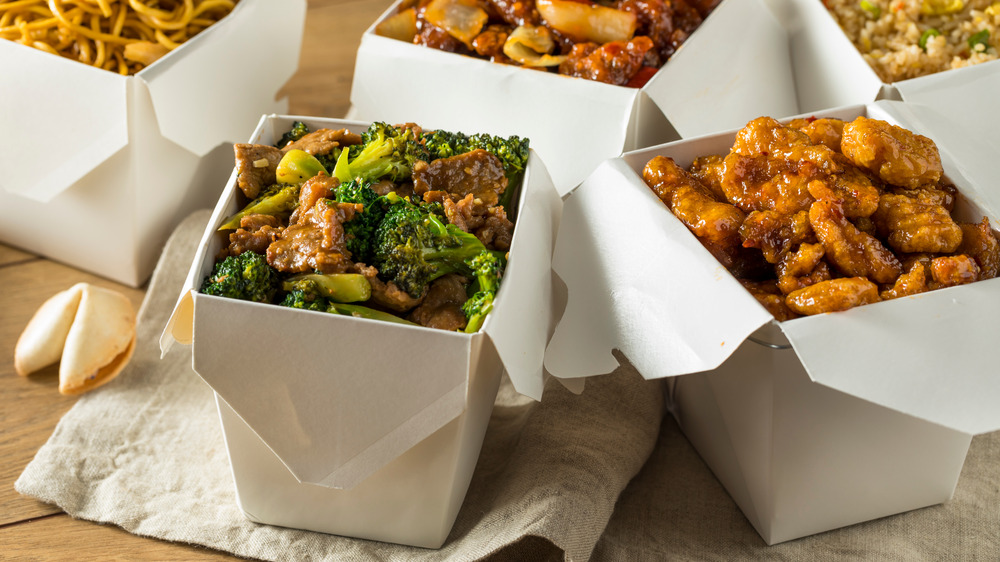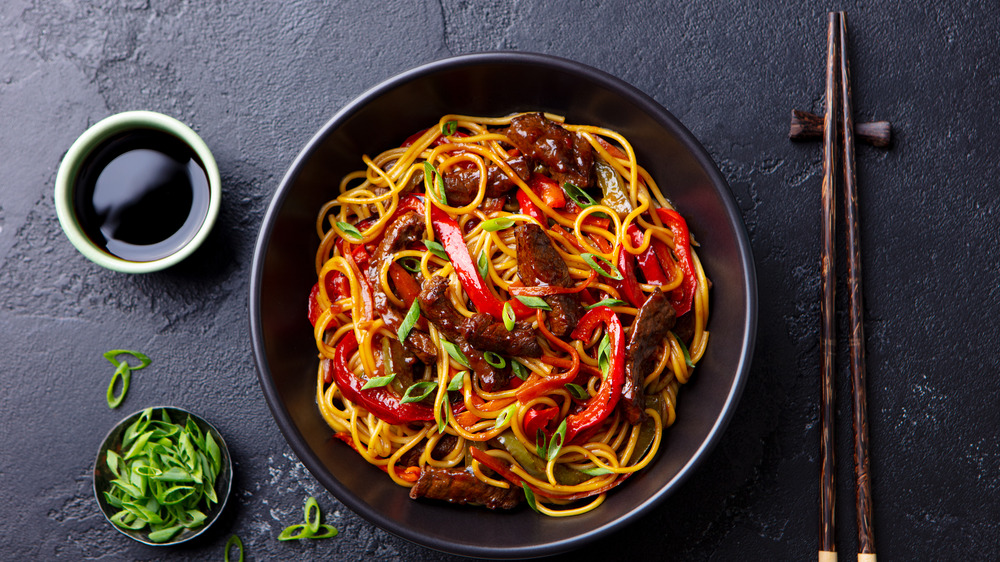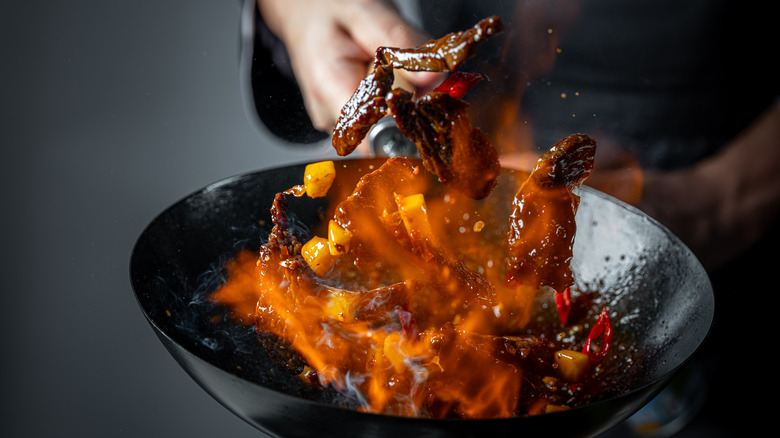The Real Reason Your Homemade Chinese Food Tastes Different From Takeout
Although we love to cook at home, we're also guilty of indulging in takeout and delivery — maybe a little too often. Sometimes, after a long day, it's just too overwhelming to contemplate the chopping, the organization, and the time involved in making a home-cooked meal. But there's another reason we sometimes reach for a takeout menu instead of our sauté pan — and that's authenticity. When we're craving nuanced cuisines such as Thai, Indian, and Chinese, it can be difficult to recreate the exact flavors of our favorite dishes at home. Particularly with Chinese food, we've found that attempts at recipes such as beef and broccoli, sesame chicken, and even just a basic stir fry sometimes fall flat, lacking the bona fide flavors found in restaurant cuisine.
There are a few reasons for this disparity. First of all, according to The Takeout, Chinese restaurants tend to utilize high-powered gas burners that are 10 times hotter than your stove at home, making it much easier for restaurant cooks to achieve wok hei, that smoky flavor we love in Chinese food. Additionally, lots of Chinese restaurants still use at least a little MSG in their dishes, providing an umami punch you just won't achieve at home without that magical white powder. MSG works to amplify the flavor of food, which can light up our taste buds and adds just the right amount of that savory taste that we all crave (via Food Insight).
You need all-purpose stir fry sauce
There's another reason your Chinese food is lacking and thankfully, it's a problem with an easy solution. Have you noticed that some of your favorite Chinese dishes come bathed in a glossy, sticky brown sauce? If you're trying to recreate them at home but aren't mixing up some stir fry sauce, chances are your flavors will never approximate the stuff from the white cardboard cartons (via The Takeout). This multipurpose sauce adds yummy flavor and a smooth texture to Chinese dishes, and it's easy to make at home. According to Martin Yan, perhaps the most recognizable name in Chinese home cooking and the host of public television's "Yan Can Cook," this sauce is a foolproof way to bring authentic Chinese flavors into your home — without consulting Uber Eats.
"This is the Chinese mother sauce," he tells The Takeout. Yan's recipe for all-purpose stir-fry sauce includes canned or boxed chicken broth, rice wine or dry sherry, soy sauce, toasted sesame oil, and a few other ingredients you're likely to have on hand or can easily pick up at the supermarket. It comes together with a teaspoon of cornstarch, tapioca, or potato starch, which instantly thickens the sauce and turns it smooth and glossy, ready to pour over any stir-fried meat, vegetable, or tofu, or over noodles or rice.
What is wok hei, and how do you achieve it at home?
When dining out in Chinese restaurants, you may have noticed that their stir-fry offerings have a far more complex flavor profile than the Chinese dishes you stir up at home. This is due at least in part to wok hei, a term that is often translated as "the breath of the wok" (via Serious Eats). This smoky depth of flavor comes courtesy of cooking a stir-fry at intense heat and speed. When a wok is heated to about 650 degrees Fahrenheit, polymers and oils within the food start breaking down, and microscopic droplets of fat start to vaporize as you toss the ingredients within the wok and they pass through the hot column of air created by the intense heat of the burner. This imbues the stir-fry with the smoky, singed flavor of wok hei, a taste which homemade Chinese food often lacks.
But how do you achieve wok hei at home without the high-powered gas burners common in Chinese restaurant kitchens? Serious Eats' J. Kenji López-Alt offers a few ideas. First of all, he points out, put down any non-stick skillet or wok — at the temperatures you'll need to heat the pan, its nonstick coating will begin to break down into toxic fumes. López-Alt suggests using a traditional carbon steel wok, and in order to get it ripping hot he recommends you head outside to your grill — using either a chimney starter or a charcoal grill loaded with red-hot coals will usher you right into wok hei territory. So, the next time you're craving a delicious, authentic Chinese dish, you can feel confident opening your pantry and not the delivery app on your phone.


